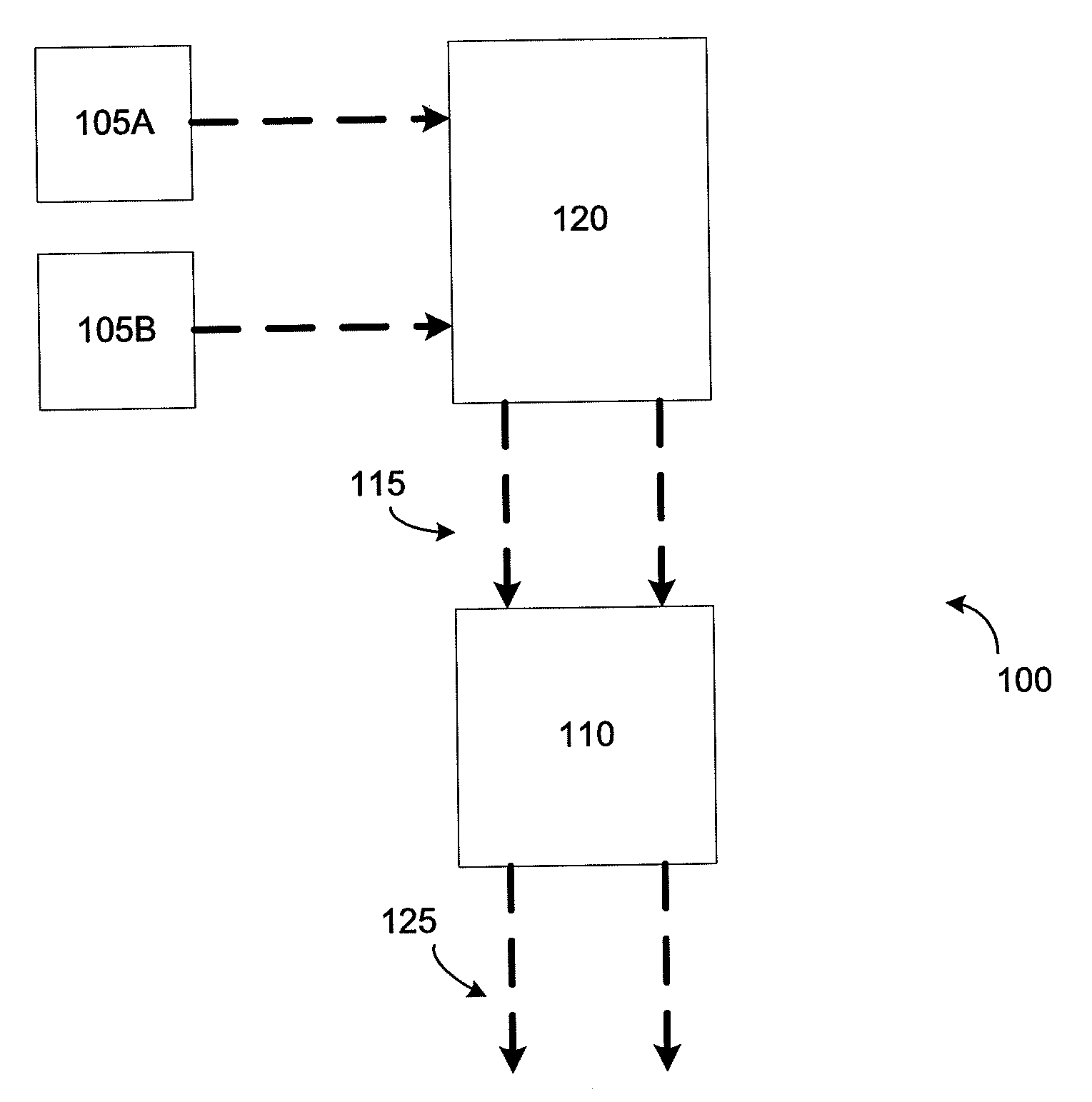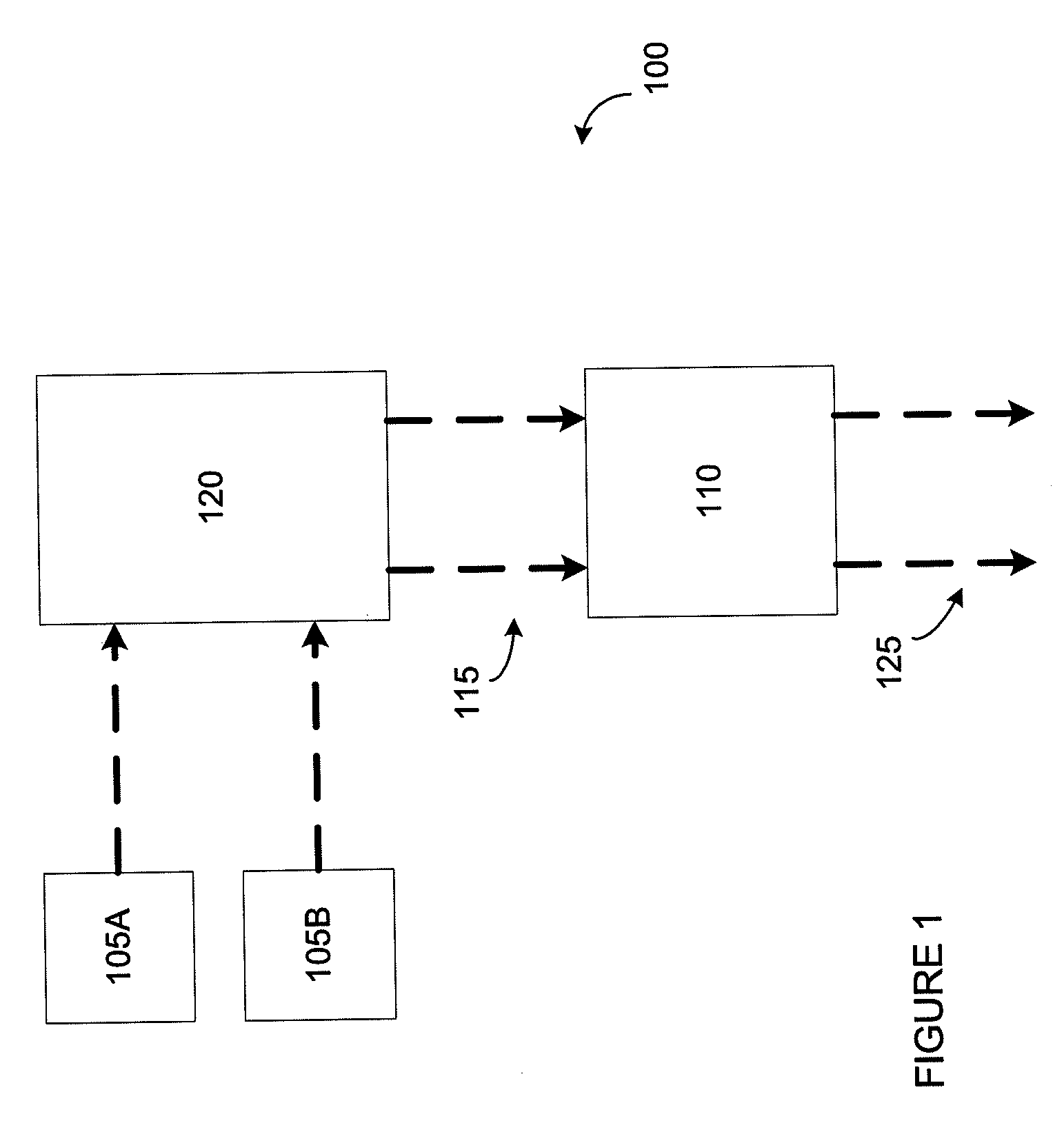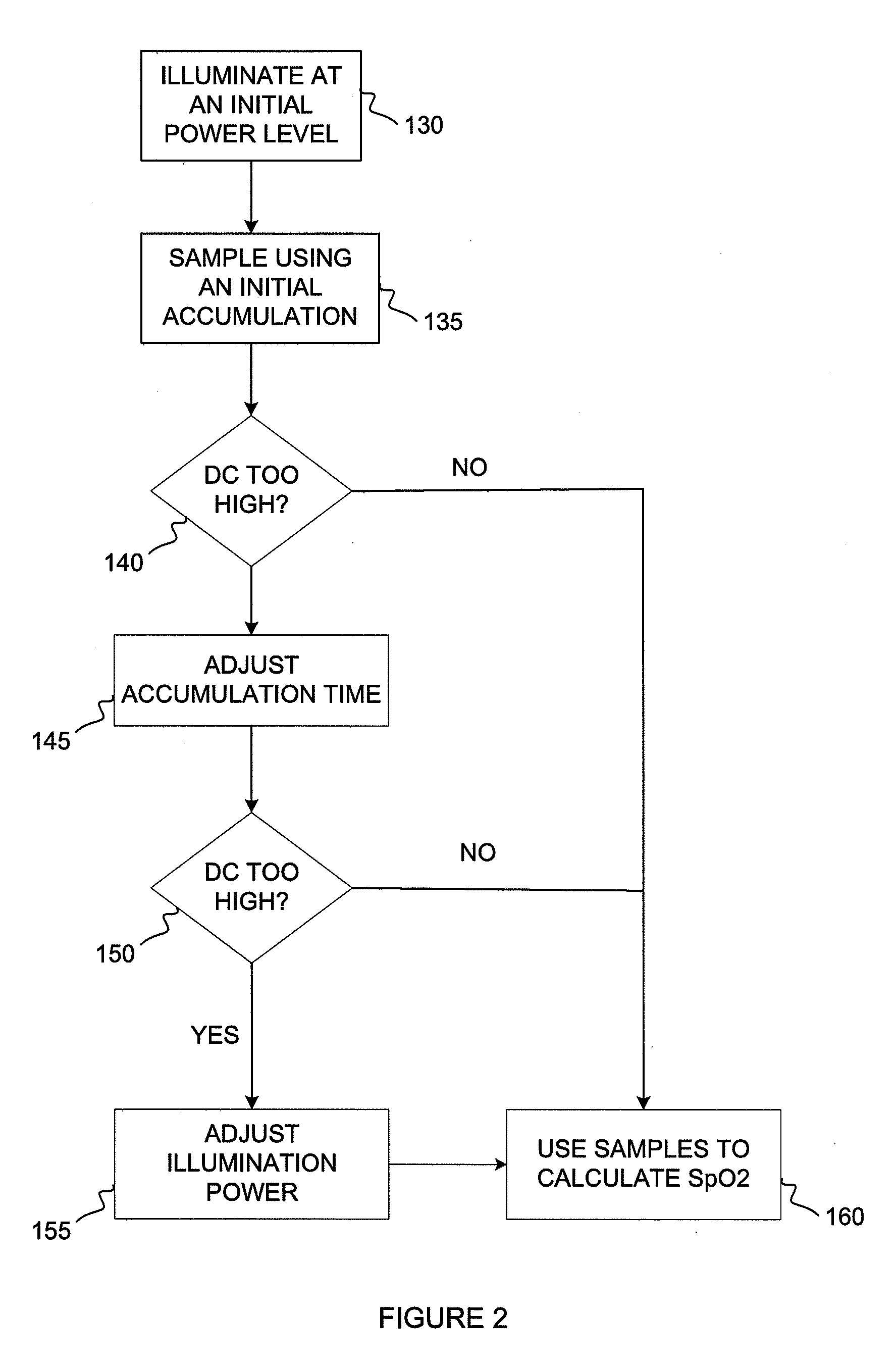Method and Apparatus for Processing a Pulsatile Biometric Signal
a biometric signal and processing method technology, applied in the field of pulse oximetry signal processing, can solve the problems of difficult avoiding of detector unit saturation, difficult avoiding of saturation, difficult avoiding of saturation, etc., to achieve the effect of increasing the dc component of the signal, avoiding saturation, and avoiding saturation
- Summary
- Abstract
- Description
- Claims
- Application Information
AI Technical Summary
Benefits of technology
Problems solved by technology
Method used
Image
Examples
Embodiment Construction
[0025]While the illustrative embodiments disclosed herein are described in the context of pulse oximetry, the illustrative embodiments can be applied in other contexts that relate to signal processing of a pulsatile biometric signal. The illustrative embodiments can be applied to, for example, a reflective pulse oximetry system or a transmission pulse oximetry system.
[0026]FIG. 1 is a schematic of a pulse oximetry system 100. A pulse oximetry system can detect samples using both red and infrared (IR) light at a plurality of times per second. The system can include a plurality of light sources 105A and 105B (e.g., a source of red light, a source of infrared light, etc.) that can be activated to transmit light for a period of time (e.g., an accumulation time). A detector unit 110 (e.g., photodetector and a preamplifier unit) can detect (e.g., sense or acquire) light reflected 115 (e.g., which can include the reflected red light or infrared light) from the living subject 120 and can co...
PUM
 Login to View More
Login to View More Abstract
Description
Claims
Application Information
 Login to View More
Login to View More - R&D
- Intellectual Property
- Life Sciences
- Materials
- Tech Scout
- Unparalleled Data Quality
- Higher Quality Content
- 60% Fewer Hallucinations
Browse by: Latest US Patents, China's latest patents, Technical Efficacy Thesaurus, Application Domain, Technology Topic, Popular Technical Reports.
© 2025 PatSnap. All rights reserved.Legal|Privacy policy|Modern Slavery Act Transparency Statement|Sitemap|About US| Contact US: help@patsnap.com



